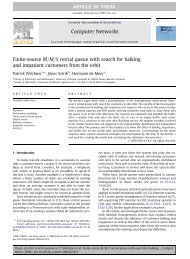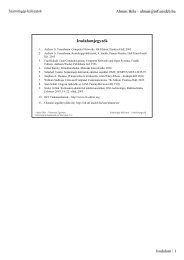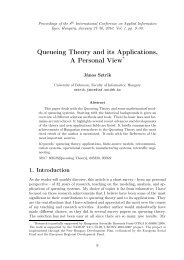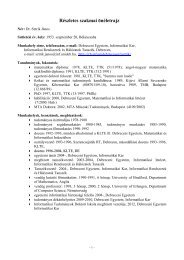Finite-Source Queueing Systems and their Applications
Finite-Source Queueing Systems and their Applications
Finite-Source Queueing Systems and their Applications
You also want an ePaper? Increase the reach of your titles
YUMPU automatically turns print PDFs into web optimized ePapers that Google loves.
János Sztrik 2001/08/05<br />
or percentage of interference time.<br />
The purpose of the following example is to show the advantages obtained in<br />
system performances <strong>and</strong> productivity from the pooling of operators. In this<br />
case several operators have the same assignment of machines.<br />
Table 1 has values for operator utilization for pairs of (N, r) parameters that<br />
have the same machine per operator ratio (N/r = 4 <strong>and</strong> then 15).<br />
Notice that the operator utilization is increasing for a given ρ even though the<br />
ratio of the number of machines per operator stays the same. This is an<br />
indication that it is better, when feasible, to pool operators rather than to<br />
assign a particular number of machines to each operator individually. The<br />
example considers two cases: (1) 6 machines serviced by one operator <strong>and</strong> (2)<br />
20 machines serviced by three operators. The results show that, even though<br />
the workload per operator increased from system 1 (6 machines/operator) to<br />
system 2 (62 3 machines/operator), the machines were serviced more efficiently<br />
in system 2. The advantages of pooling are well known.<br />
<strong>Finite</strong>-<strong>Source</strong> <strong>Queueing</strong> <strong>Systems</strong> <strong>and</strong> <strong>their</strong> <strong>Applications</strong>







